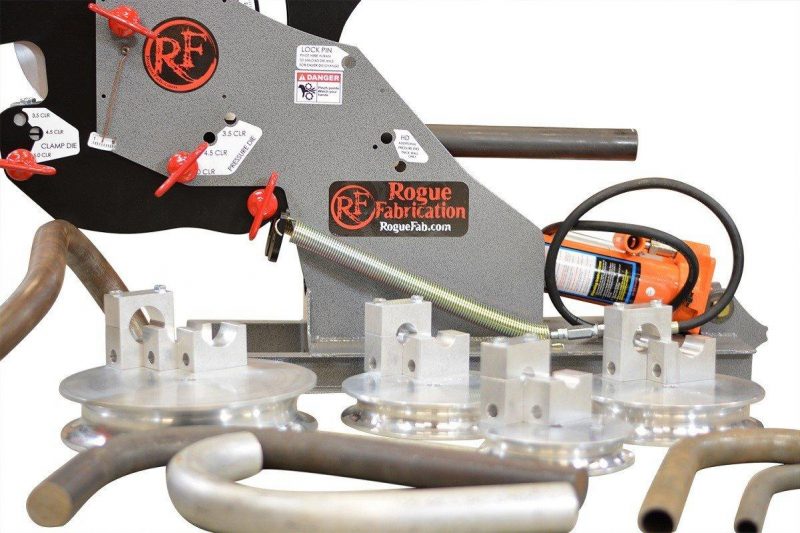Let’s begin by understanding the five factors that apply to the tube and tube bending machines. These are tube type regularization and bending radius standardization, bend radius, bending radius, bending speed, the mandrel, and its position.

These five factors will help you understand the working principle of tube bending machines and how to avoid abnormal bending.
Table of Contents
The main factors that make tube and pipe bending machines work.
Regularization of the tube type
When exhausting pipes, avoid excessive arcs, arbitrary curves, or compound bends. The tooling will be bulky and limited by the pipe bender tool’s size.
It is extremely difficult to design arbitrary curves or compound bends. This makes it very difficult to mechanize and automate pipe bending machine production. A bend greater than 180 degrees makes it impossible for the pipe bender to remove the mold.
Bending radius standardization
The bending radius should be equal to “one tube, one die” or “multiple tubes, one die.” No matter how many bends or angles a pipe has, the radius of its bending must be one. This is because the tube bending machine and metal pipe do not replace the module in the bending process.
Multiple tubes and one mold means that tubes with the same diameter should have the same bending radius. This is because they use the same set to bend different tubes.
Bending radius
The catheter’s bending radius determines how much resistance it experiences during bending. A good match is generally a large diameter with a small bending radius.
If the diameter is small and the radius is large, it is easy to slip and wrinkle. It is also difficult to guarantee the quality of bending. The radius of the pipe bend die is usually 23 times the pipe’s diameter.
Bending forming speed
The main factor that affects the quality of the forming is the speed at which the bend is made. Too fast speed can easily result in a flat catheter part. The roundness of the catheter will not meet the requirements, and it could crack or break. It is possible to cause the compression block and catheter to slip if the speed is too slow.
A large tube can easily form the sag on the curved end of the catheter. A large number of CNC pipe bending machines have shown that the catheter’s bending speed can be determined as a percentage of the machine’s maximum speed.
The mandrel bender is used to support the catheter’s inner wall during the bending process. This prevents it from deforming. It is impossible to guarantee the quality of the mandrel if it isn’t used to bend the pipe material on the machine tool.
There are many types to make a choice from, including column mandrels, universal single, triple, three, and four-ball head mandrels, oriented single, multi ball head mandrels, and others.
The metal pipes bender also depends on the position of your mandrel. Theoretically, the catheter should bend at the same angle as the bending die’s tangent.
A large number of experiments have shown that bending the catheter 1 to 2mm ahead is preferable, and this will ensure the best quality bending tube. Too much advancement can cause the “goose head” phenomenon on the outer walls of the curved parts.
The above five factors are important to understand how the tube and pipe bending machines work.
Principles of tube and pipe bending machines
The metal pipe bending machine bends the pipes. The rocker arms bear the circumferential force, resistance moment, and return position. The rocker arm driving device drags the rocker arms at a speed of 2.2 r/min. After adjusting the radius of the rocker swing machine, the hydraulic motor for the middle slidetable is started.
The worktable of the middle slidetable is moved, and the center of the chuck is placed at a specific size according to the slide table’s scale. Finally, the bending hydraulic motor can be turned off.
Move the small slide tables using the rack-and-pinion mechanism. Rotate the top screw to secure the chuck. Turn off the large slide motor. Use the clamping motor to clamp the large slide table’s workbench to position the rocker arm rotation center.
The rocker arm driving device stops working if the pipe is bent. Instead, the main driving device pushes the rocker arms through the fittings. The rocker arm drive device drags the rocker arms back to their original position.
The return hydraulic motor is started when the electromagnetic clutch closes while bending square or round pipes. The rocker arm drive device causes the slewing device’s rotation.
The hydraulic motor turns off when the rocker arm is back in its original position. Clutch is ready for the next step. The pipe fittings are used to support the resistance torque and circumferential force. The rocker arm drive device drags the rocker arms back to their original positions.
The return hydraulic motor is started when the electromagnetic clutch closes. The rocker arm drive device causes the slewing device’s rotation. The hydraulic motor turns off when the rocker arm is back in its original position. Clutch is ready for the next step.











